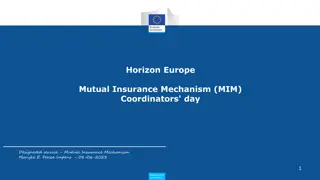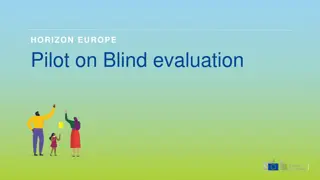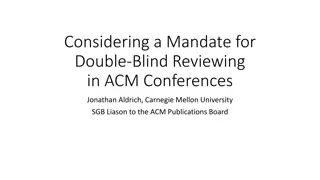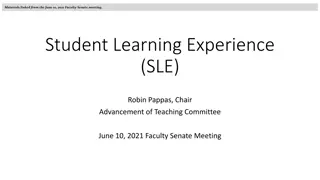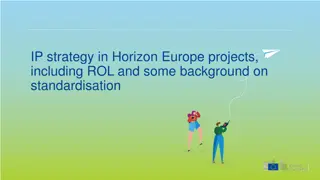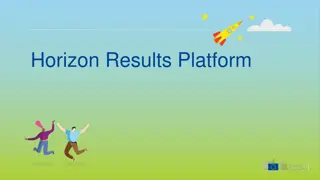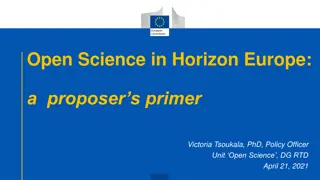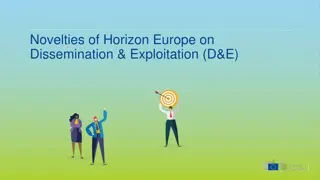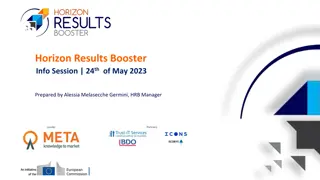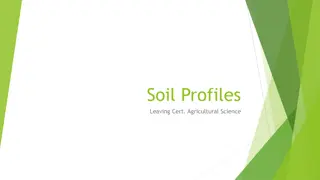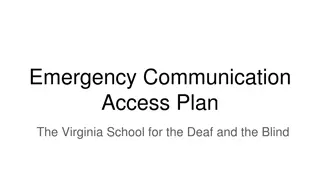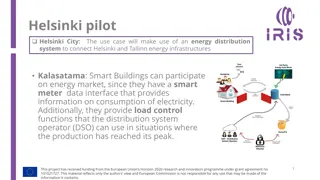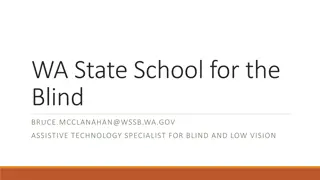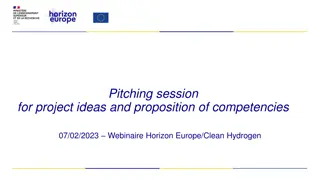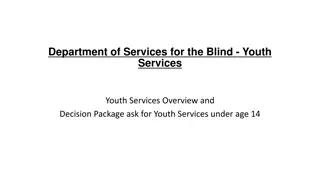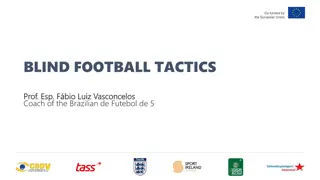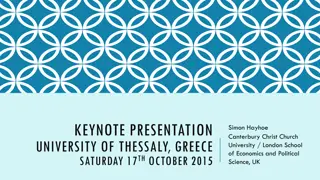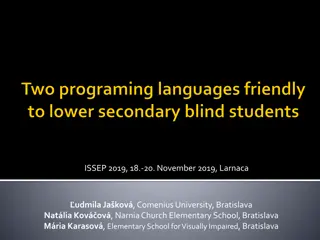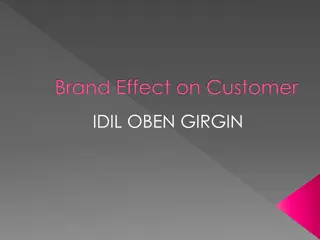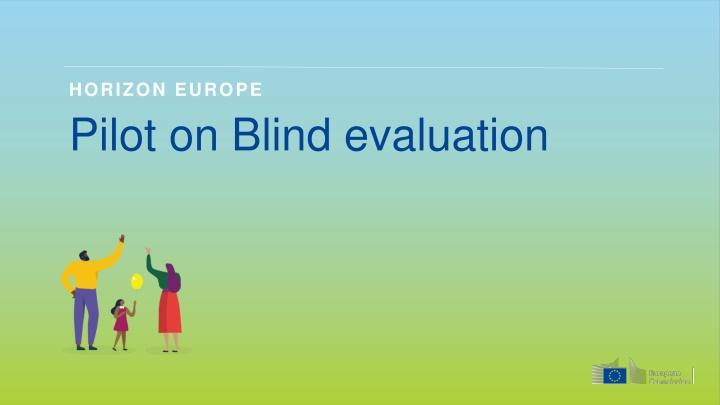
Blind Evaluation Pilot in HORIZON EUROPE Project
Within the HORIZON EUROPE Pilot on Blind Evaluation, the 2023-2024 work program will include blind evaluation of calls to address potential biases. The pilot aims to assess the feasibility of blind evaluations and mitigate biases in the research and innovation system. This initiative involves key admissibility criteria and a structured evaluation process to ensure fairness and transparency.
Download Presentation

Please find below an Image/Link to download the presentation.
The content on the website is provided AS IS for your information and personal use only. It may not be sold, licensed, or shared on other websites without obtaining consent from the author. If you encounter any issues during the download, it is possible that the publisher has removed the file from their server.
You are allowed to download the files provided on this website for personal or commercial use, subject to the condition that they are used lawfully. All files are the property of their respective owners.
The content on the website is provided AS IS for your information and personal use only. It may not be sold, licensed, or shared on other websites without obtaining consent from the author.
E N D
Presentation Transcript
HORIZON EUROPE Pilot on Blind evaluation
Pilot on Blind evaluation In HE WP 2023-2024, all two-stage calls will be evaluated blindly, except one call for Widening (legal basis on article 28 of HE Regulation) With this pilot we want to tackle some understandable concerns that the evaluation process could be perceived as biased towards well-known organisations in countries with better performing Research and Innovation systems (a recent independent study has not revealed such a bias). The pilot aims to identify whether the implementation of blind evaluation within our legal requirements and operational context creates any difficulties. If this is not the case, it might lead to a modified approach, with a greater use of blind evaluations, which could effectively mitigate the risk of real, potential or perceived reputational bias.
Key facts It will be launched in the WP 2023-24 All two-stage calls in 2023 and 2024 should take part in the pilot (except justified cases) It will only concern the first stage application of two-stage calls NEWadmissibility criterion: Applicants submitting a proposal under the blind evaluation pilot must not disclose their organisation names, acronyms, logos nor names of personnel in Part B of their first-stage application. No identification data can be mentioned by applicants in the proposal s Part B, otherwise inadmissible proposal
Process The concept of Blind evaluation requires that experts in the SEP evaluation session do not know the consortium structure and the applicant(s) involved. Part A Once the evaluation session is accordingly configured, the IT system will automatically hide from experts the identification (consortium) data in the Proposal Details page. Call coordinators configure the evaluation session in SEP for blind evaluation Part B As it is not possible to hide any information from Part B in the SEP IT tool, it is up to the applicant to omit there any identification data in their first-stage application. The evaluating officer manually checks whether the applicant included any identification in Part B of the proposal. If proposals include any identification of the applicant in Part B, the proposal will be declared inadmissible.
Important to know Difference between clearly inadmissible proposals and grey-zone cases, which will be evaluated on a case-by-case basis with the help of the legal team. We expect that there will be admissible proposals where the evaluator could guess the identity of the applicant regardless (e.g., small research community). We plan to track those cases and examine to what extent true blind evaluations were possible. Mention of country of the applicant does not necessarily mean that a proposal will be deemed inadmissible. However, in case the applicant is clearly identifiable, the proposal will be inadmissible. Proposals with blacked out names and information are not preferred but accepted. We will also consider the intentionality behind the exposure of identity. The application form template was annotated with more guidance for the applicants regarding the blind evaluation process.
Questions from events How can experts assess the capacity of the partners to perform the work proposed (implementation)? Only excellence and part of the impact are evaluated in first-stage proposals, we do not evaluate implementation at this stage. How can applicants support the state of the art or TRL of a proposal without citing their own publications or projects? Applicants cannot mention these publications as theirs, but they can mention them from a neutral point of view. Can we mention governmental bodies by name in a blind evaluation proposal? If they are beneficiaries, then not. The consortium structure cannot be mentioned in the first stage application. The consortium will be revealed in the second stage application, as the second stage is not evaluated blindly. How to manage if we have to mention the location of a pilot plot or type of farm, or a climatic area? This could be mentioned (especially when the topic description requires it), as the applicant does not necessarily have to be from this area.
How to insert references to publications The proposal can include references to participants own publications if there is no emphasis that the publication is authored by one or more of the proposers. For example, the following statement will not be admissible: For climate impact, we will use greenhouse gas emission intensities, following a methodology developed previously by a project partner (Dalin et al.) but the following would be ok: For climate impact, we will use greenhouse gas emission intensities, following the methodology described in Dalin et al.
Examples of statements resulting in inadmissible proposals Most of project s participants have been involved in the previous H2020 project, NANOCOM... For climate impact, we will use greenhouse gas emission intensities, following a methodology developed previously by a project partner (Dalin et al.) This task in WP3 will be based on outputs generated by some participants of the consortium , (with in the footnote a link to a YouTube video or webpage where participants can be identified) The consortium includes the largest research institute in France Partner 3 is the leading company in Spain for wind turbine installation
Examples of statements resulting in inadmissible proposals Our current research expands our previous findings described in a recently published article (Wiliam et al, 2022) The consortium consists of leaders in the high tech industry, including the biggest in terms of capital constructor of micro chips The coordinator organisation was the one who first introduced the concept of m-RNA in vaccines The consortium consists of 2 research centres (including an international one based in Geneva) and the oldest university in Belgium

